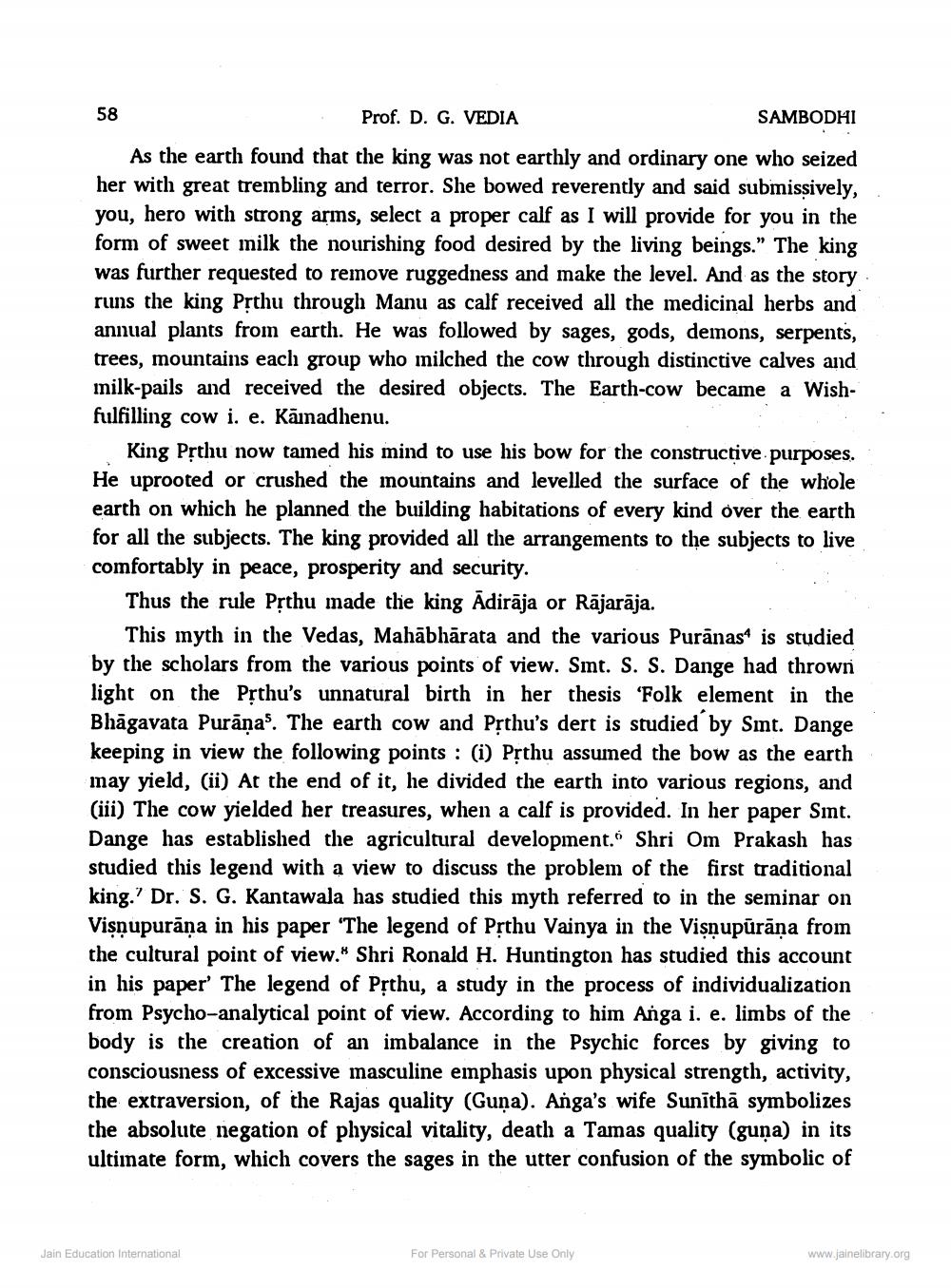________________
58 Prof. D. G. VEDIA
SAMBODHI As the earth found that the king was not earthly and ordinary one who seized her with great trembling and terror. She bowed reverently and said submissively, you, hero with strong arms, select a proper calf as I will provide for you in the form of sweet milk the nourishing food desired by the living beings." The king was further requested to remove ruggedness and make the level. And as the story runs the king Pșthu through Manu as calf received all the medicinal herbs and annual plants from earth. He was followed by sages, gods, demons, serpents, trees, mountains each group who milched the cow through distinctive calves and milk-pails and received the desired objects. The Earth-cow became a Wishfulfilling cow i. e. Kamadhenu.
King Prthu now tamed his mind to use his bow for the constructive purposes. He uprooted or crushed the mountains and levelled the surface of the whole earth on which he planned the building habitations of every kind over the earth for all the subjects. The king provided all the arrangements to the subjects to live comfortably in peace, prosperity and security.
Thus the rule Pșthu made the king Adirāja or Rājarāja.
This myth in the Vedas, Mahābhārata and the various Puranas is studied by the scholars from the various points of view. Smt. S. S. Dange had thrown light on the Pșthu's unnatural birth in her thesis ‘Folk element in the Bhāgavata Purāna'. The earth cow and Pșthu's dert is studied by Smt. Dange keeping in view the following points : (i) Pệthu assumed the bow as the earth may yield, (ii) At the end of it, he divided the earth into various regions, and (iii) The cow yielded her treasures, when a calf is provided. In her paper Smt. Dange has established the agricultural development. Shri Om Prakash has studied this legend with a view to discuss the problem of the first traditional king.' Dr. S. G. Kantawala has studied this myth referred to in the seminar on Vişnupurāņa in his paper 'The legend of Pșthu Vainya in the Vişnupūrāņa from the cultural point of view.* Shri Ronald H. Huntington has studied this account in his paper' The legend of Pșthu, a study in the process of individualization from Psycho-analytical point of view. According to him Anga i. e. limbs of the body is the creation of an imbalance in the Psychic forces by giving to consciousness of excessive masculine emphasis upon physical strength, activity, the extraversion, of the Rajas quality (Guna). Anga's wife Sunīthā symbolizes the absolute negation of physical vitality, death a Tamas quality (guna) in its ultimate form, which covers the sages in the utter confusion of the symbolic of
Jain Education International
For Personal & Private Use Only
www.jainelibrary.org




